19 Jun What to put in a sensory garden
For people who are sight impared, have limited mobility or just want to get as much value as possible from their outdoor spaces, a sensory garden is a must. Here are some suggestions for what to include.
- Different textured surfaces – gravel, paving, lawn, cobbles etc
- Strong colour contrasts to enhance features and guide the journey around the garden. Eg fencing, planting, paths, furniture
- A place to sit with beautiful views and/or scents
- Lighting to bring in more colour and extend garden use into evening time
- Sounds from rustling plants, moving water and birdsong
- Movement – from plants, water, wildlife and outdoor playthings
- Screening and privacy to reduce disturbance from street noise
- Scents – plants are not the only source of scent. Think outdoor kitchen
- Taste – edible plants and al fresco eating
Recently I’ve been following a Facebook group all about Sensory Gardens For Dogs and it’s inspired me to think harder about gardens for people too. How can a garden satisfy all 5 senses for humans of all ages and interests? Every garden I work on includes sensory elements but perhaps their benefits should be highlighted a little more.
Lets look a bit closer at the senses and how they relate to landscaped gardens. I’ve included the 5 most mentioned senses (touch, sight, smell, hearing, taste) and 3 bonus ones that I think are also important in a sensory garden.
Sight
A sensory garden needn’t be hard work. In this low maintenance garden we’ve included texture, colour and scent but ensured that it’s very easy to navigate and care for.
Our primary role as landscapers is to create a garden that functions well for its users and looks good. It must be easy on the eye.
But everybody’s eyes are different. What is beautiful to one person won’t appeal to another. What’s more, some of us see colour differently, some find it harder to pick out different features.
Using strong colour contrasts and lighting for paths and steps can be a marvellous help when it comes to safety. For example a contrasting strip at the edge of a step could well prevent a fall. Lighting the edge of a patio or path makes night time navigation far easier. Likewise, pond lighting can not only enhance and beautify a feature, it could save visitors from a late evening dunking.
My job as a landscaper is not to question clients choice of colour scheme but to help them futureproof their gardens and make them suitable for anyone to use.
Touch
I have to confess, I’m not one for touching everything I encounter in a garden. But I know someone who does. My daughter, Evie is just one year old and she uses touch a lot to explore the world around her. I’ve noticed too that older people and those with poor eyesight rely much more on touch, feel and scent than I do.
So how can we stimulate the “touch” sense in a garden?
Touch is not just for hands, it could be warm sunshine or a cool breeze on our faces. We also gain an understanding of our surroundings through our feet as we walk on different surfaces, through our skin as we brush past things and through our backsides when we’re sitting down. I’m thinking of Evie again who loves being pushed along a bumpy path in her buggy – it’s a whole different sensation for her and I imagine the same would apply to a wheelchair user.
So for touch we can use different materials and surfaces. Perhaps contrast smooth pathing with cobbles, lawn grass with gravel. Spiky plants with soft. Water with rocks. And then for vertical surfaces we could use render, tiles, glass, timber, stone, cor-ten steel or wrought iron. When you start looking around the choice is almost endless. Which is why I recommend having a professional garden designer help you to plan your sensory garden.
Taste
My favourite sense has got to be taste! Now the obvious subject for this part of the article ought to be edible plants. Looking for different species to nourish your family and add flavour to your food. But, judging by some of the landscaping projects I’ve been working on lately, people are taking flavour so seriously that they are installing outdoor kitchens and cooking outdoors. And they’re right. Food does taste better when it’s cooked outside, whether you are barbecuing, have a pizza oven or just roasting marshmallows over a firepit. Every sensory garden should have some way of producing delicious things to eat.
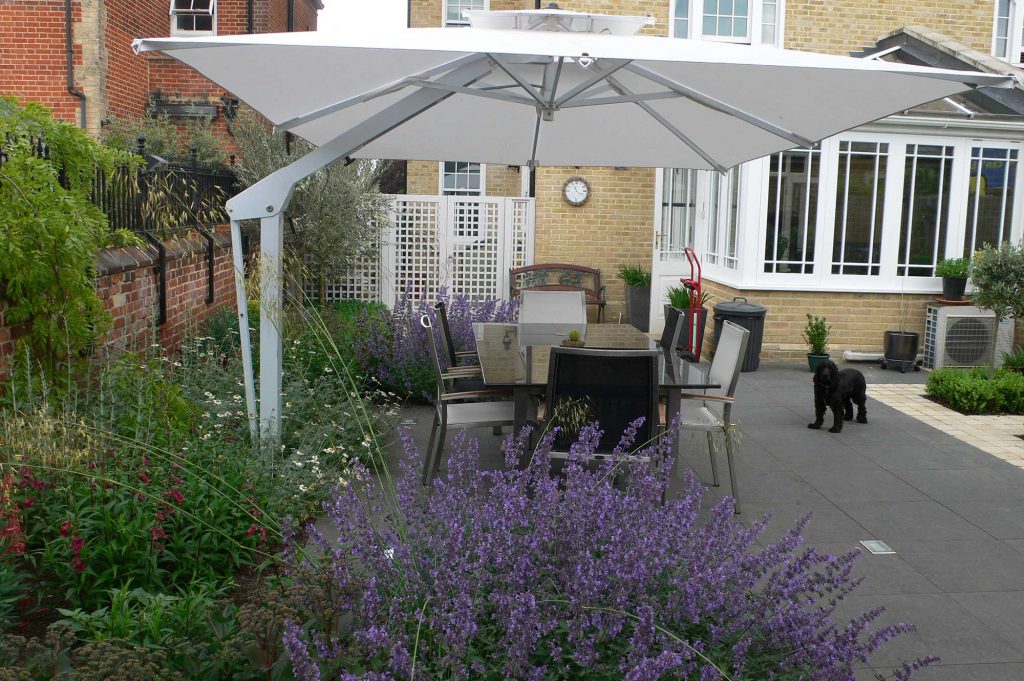
This garden in Colchester is all about sharing food with friends and family but we’ve added lots of sensory features too. Recessed lighting in the patio, very tactile planting and a beautiful sunshade to keep the temperature comfortable.
PS don’t forget to include tasty things for wildlife too….bee and butterfly friendly flowers, seeds for the birds (sunflowers are good!) and water for hedgehogs
Smell
Sorry, I’m back to the barbecue. Can’t resist the smell of sausages sizzling over charcoal – at any time of year. But of course food is not the only source of garden smells.
Some of my favourite scented garden features include
- Roses or honeysuckles climbing over an arbour seat or a pergola
- Herbs growing in raised planters so that I can brush my hand over them and release the scent
- Conifers and pines
- Thyme or chamomile in between pavers smell divine when they are walked upon
- New mown grass – heavenly!
- Sweet oak – heavily scented flowers when nothing else is in bloom
Hearing
Probably my least favourite garden sound is street noise. Traffic, passers-by neighbourhood dogs etc. Some of those sounds can be reduced by clever landscaping tips. Hedges and trees are quite good at creating noise barriers and will help your garden feel more private.
Encouraging birds into the garden of course brings birdsong which I find incredibly relaxing and also testament to the wider environmental benefits of a garden.
Moving water is a popular sound-maker. Even a small water feature can make an intriguing noise that just begs visitors to find its source.
Scrunching gravel beneath the feet – there’s another sound for you….it’s one that’s renowned for warning homeowners that somebody is on their property.
Bamboo is one of my favourite noise making plants. It rattles beautifully when the wind blows through it. But be sure your landscaper sinks a root barrier into the ground so that the plant doesn’t spread too enthusiastically.
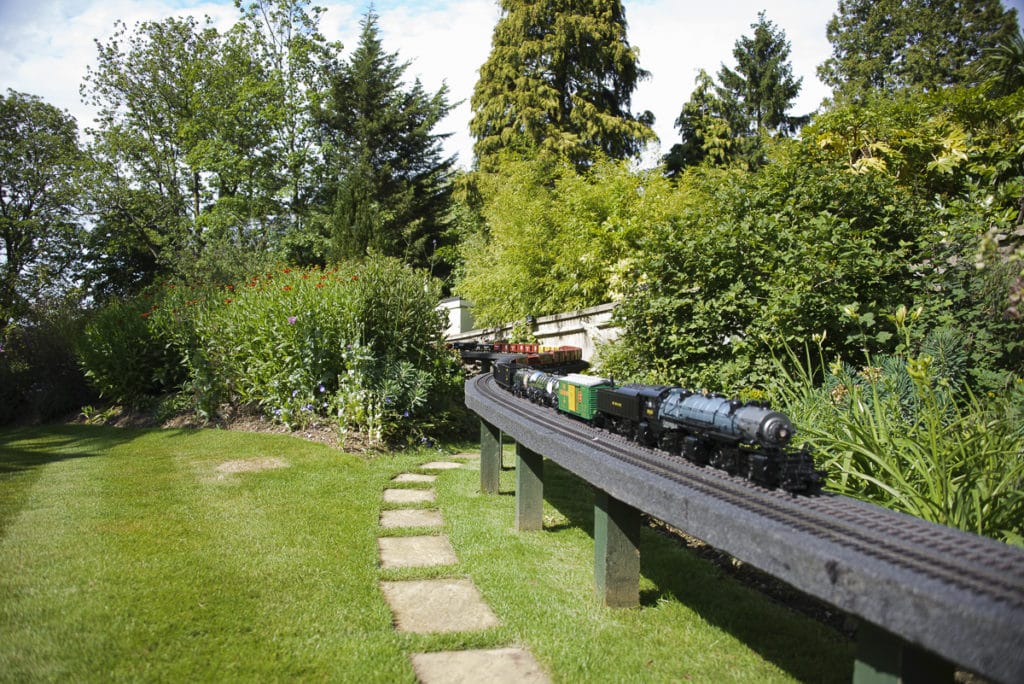
Children at play is a great sound too. Even if the “children” are fully grown. I have to confess that I’m impressed by this garden with a model railway running though it.
Image courtesy of Arbour Landscape Solutions
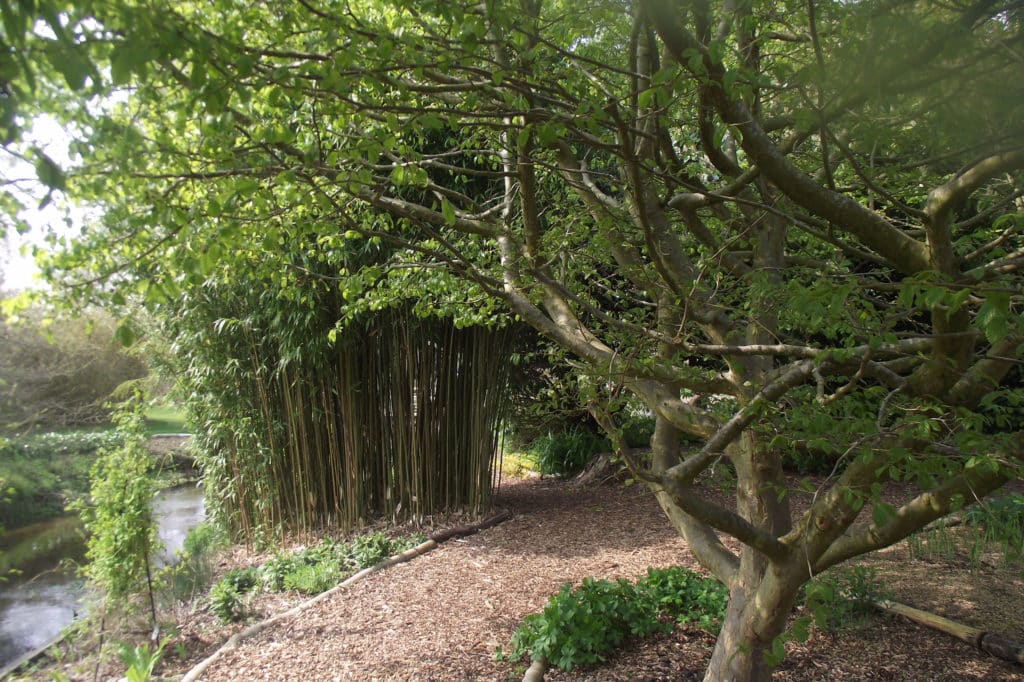
Not everyone has the River Lark flowing through their gardens but visiting places like Fullers Mill in Suffolk to appreciate the sensory qualities can provide inspiration for improving your own outdoor spaces.
Balance
Here’s a sense we don’t think about enough but for some people it’s really important. Evie will soon be learning to balance on her own two feet and as she starts walking, I’m very conscious that she’ll take the occasional topple – especially on uneven ground.
So far, I’m lucky that my parents don’t have any mobility issues, but if they did, I’d be thinking about ways I could reduce the risk of them losing their balance in the garden.
Nice even surfaces with no loose materials. Sturdy steps or slopes that are not too steep, wide paths and probably some sort of structures for them to hold on to. Perhaps a strong balustrade, a pergola with the uprights reasonably close together. But hopefully not those ugly contraptions that I see screwed to the sides of some houses.
Temperature
Ahhhh – the British weather. Nothing more unpredictable than outside temperatures. This is where landscaping features like screens, pergolas and hedges come into their own. Carefully placed, these can filter out cold winds in winter and create cool shade in summer.
The colours you use in a garden can also fool your body to thinking the temperature is more comfortable. Pale purples, blues and whites “feel” cool whereas exciting reds, oranges and yellows are warmer and more vibrant.
Again, it’s little things like this that a garden designer would include in the master plan for a landscaping project.
Proprioception
Proprioception is a sense that we develop when young and then as we get older, it starts to fray a bit around the edges. I didn’t know what it was until I read a friend’s blog about Amatsu Therapy. You know how you can get food into your mouth without looking at where it’s going? Or how you can change gear whilst driving without looking at the pedals or the gearstick? That’s proprioception. Bottom line is, use it or lose it.
So why not bring features into your garden to develop your childrens’ sense of proprioception and preserve your own? Changes in levels and textures under your feet, raised features to circumnavigate, games, toys and activities to help with coordination. I gather from the Doggy Facebook Group that proprioception should be a consideration in gardens for dogs too.
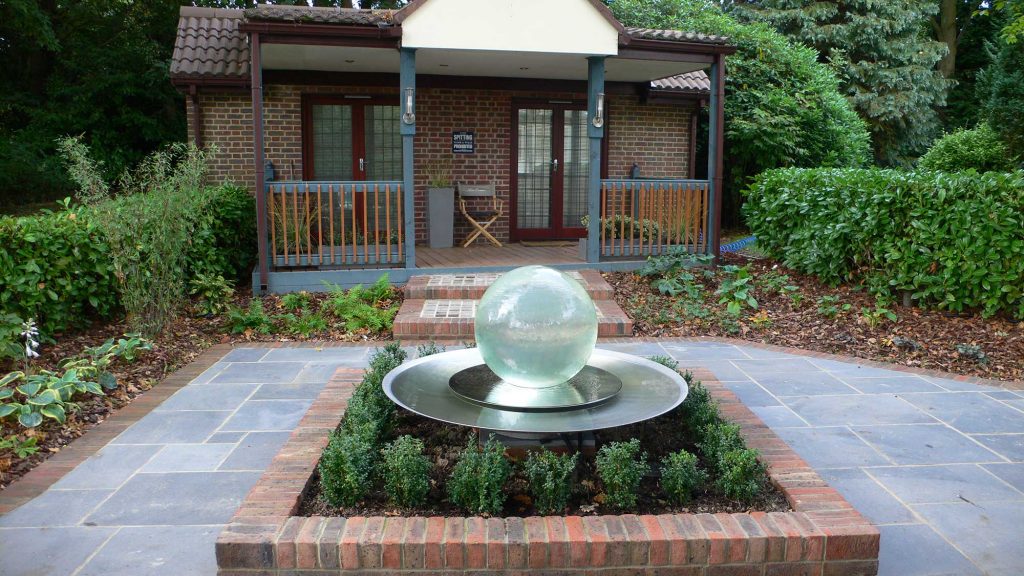
A sensory garden is all about providing features to enrich the lives of its visitors.
In this small space we have safe, easily negotiated steps, moving water, textured plants, an interesting pattern of patio stones, a sheltered veranda and birdsong from the surrounding woodland.
Now that I’ve written this article, I’m going to make myself a coffee and have a wander around my garden to see if there’s any way I could enhance its sensory properties. Why don’t you do the same? And if you need any help to add or improve features, give me a call and we’ll chat about your ideas.
Contact Paul at Holland Landscapes
Related articles
Wise buys to help you enjoy your summer garden



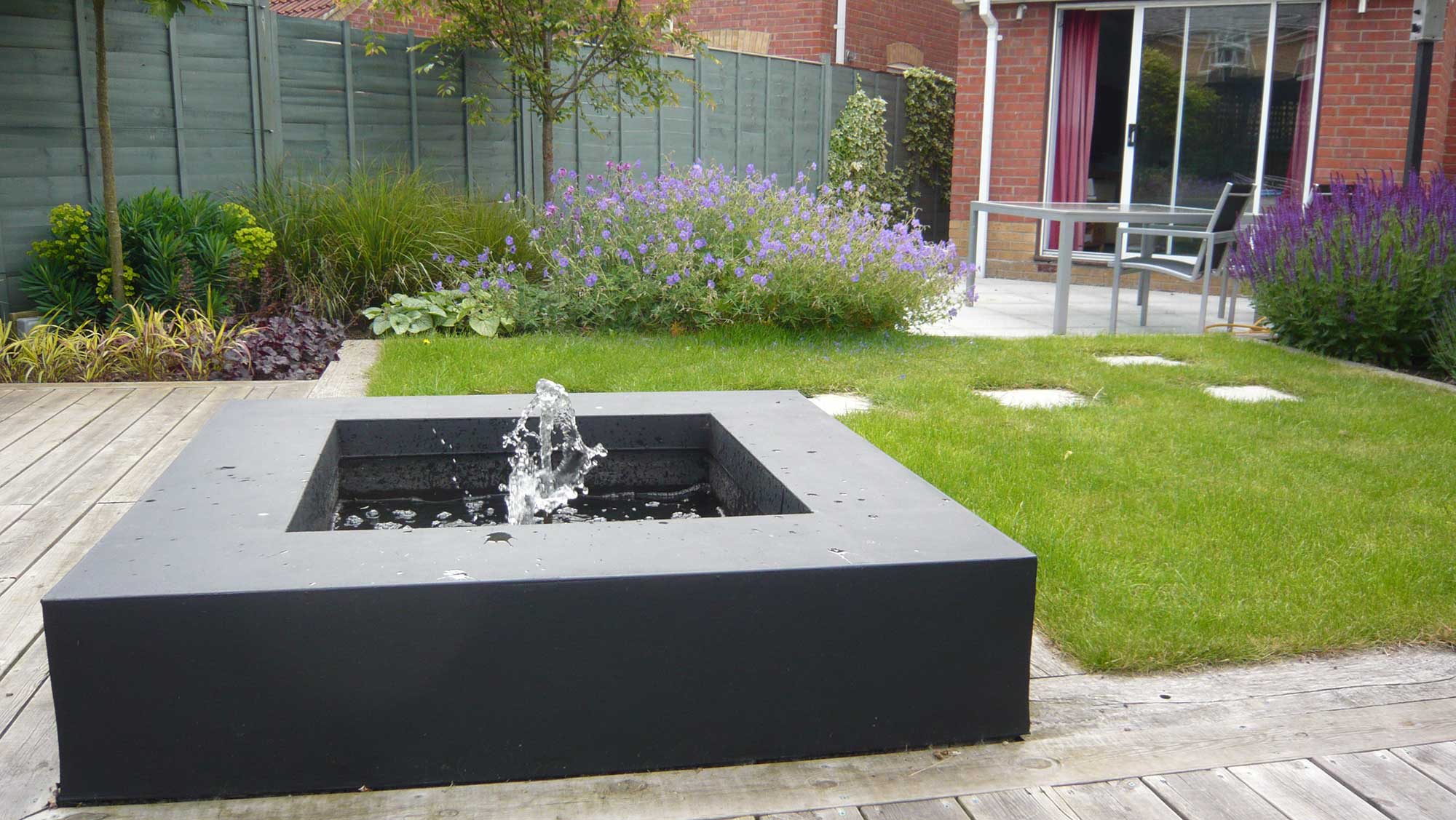
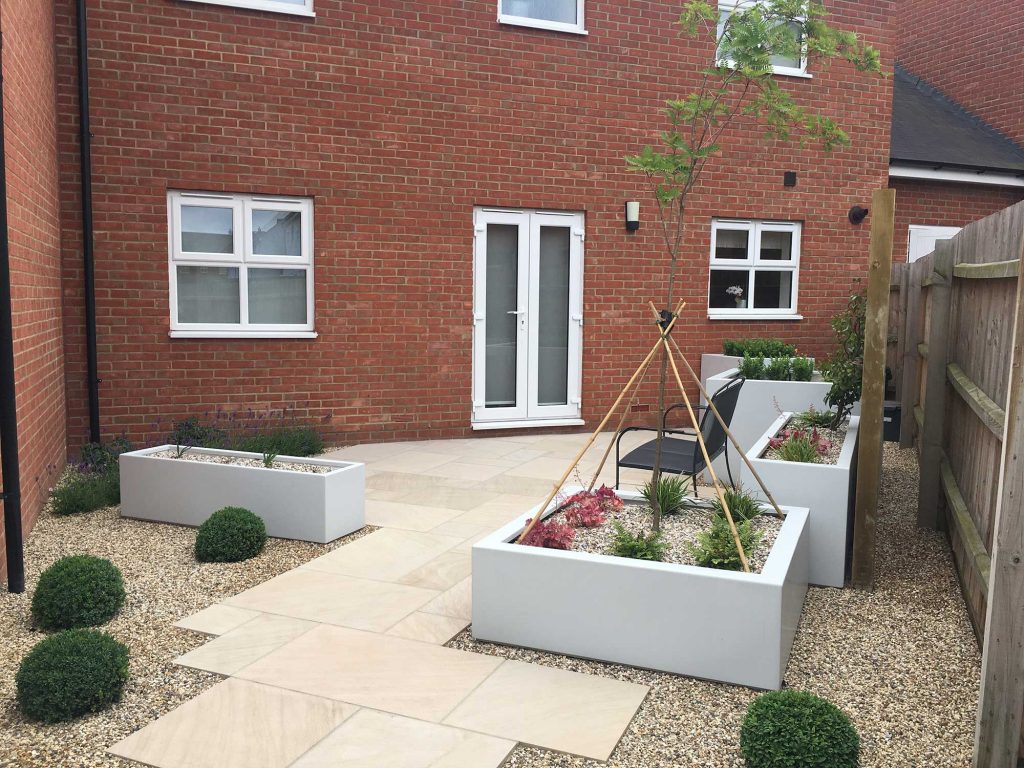
Sorry, the comment form is closed at this time.